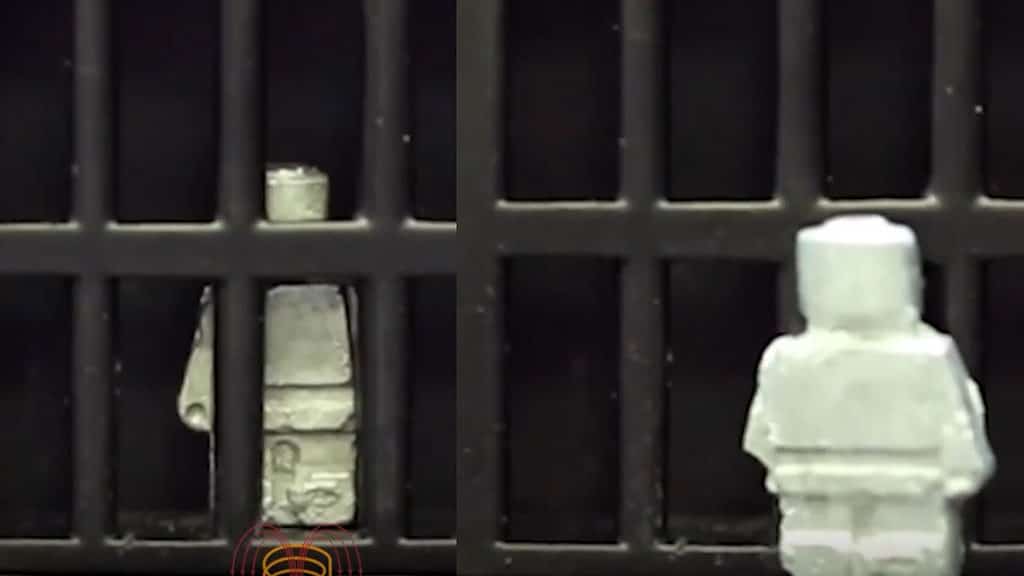A team of international researchers has developed a microbot with a stunning ability: it can shift shapes, melting itself and then returning to its original solid form when required. The researchers call it the” magnetoactive phase transitional matter” (MPTM). They have released a video of MPTM in which it is seen escaping a prison-like room by melting its entire body.

According to experts, MPTM is possibly the first machine that works like both; a soft-bodied robot (made of soft flexible materials, such as elastomers, gels, etc.) and a hard robot (regular robot built from rigid materials like metal and plastic).
From its first appearance, the shape-shifting microbot looks like a real-life version of the nefarious T-1000 robot seen in the movie Terminator 2: Judgment Day. However, the researchers assure that MPTMs will only work to benefit humanity. For instance, such robots could be used for delivering medicines to hard-to-reach locations and for curing blood clots or nerve blockages inside the human body.
Explaining this further, one of the study authors Chengfeng Pan told The Washington Post,
“This material can achieve Terminator-2-like performance, including fast movement and heavy load bearing when it is in its solid state, and shape-changing in its liquid state. Potentially, this material system can be used for applications in flexible electronics, health care, and robotics.”
The science behind MPTM
Soft robotics is a fast-growing field and scientists have been creating all kinds of soft robots that can climb, walk, or swim. Such untethered microbots can be employed for non-invasive diagnosis or performing targeted drug delivery inside the human body. However, these soft machines also have their limitations.
For example, a soft robot on a drug delivery mission could get stuck or damage itself while passing through openings that are too narrow or smaller than its own size. The entire mission could fail in such a case and might also put a patient’s life at risk. Now imagine what would happen if the same robot knew how to change its shape like MPTM?
It would easily get through such difficult places by changing from a solid form to a liquid form. MPTM is made of magnetically-responsive elements such as neodymium, gallium, boron, and iron. Its shape-shifting feature is actually inspired by the sea cucumber’s ability to change body stiffness.
“To both support high load capacity and achieve morphological adaptability, natural organisms typically rely on dynamic stiffness changes. For example, the sea cucumber can reversibly alter the stiffness of its tissue in order to improve its load capacity and prevent physical damage from the environment. An octopus can switch the stiffness of its arms between extreme compliance for dramatic morphological change and high stiffness for load-intensive tasks such as grasping, object manipulation, and locomotion. Inspired by nature, researchers have explored stiffness tuning using a variety of material systems and strategies,” the researchers note.
The magnetic elements of MPTM have a low melting point. So the particles that form the microbot don’t require much energy and they get heated even in the presence of a magnetic field. This is why MPTM quickly melts upon receiving heat and regains its solid shape when the ambient temperature falls down. The magnetic nature of the particles also allows the researchers to control MPTM’s motion and activity using a magnetic field.
Testing the Terminator robot’s potential
The researchers demonstrated that MTPM could escape prison by melting itself but they didn’t stop there. In their study, they mention that MTPM went through four more interesting tests that showed its other impressive abilities. In the second test, the researchers used MPTM as a wireless soldering and circuit-repairing device. The microbot proved to be electrically conductiveand passed the test.
The study authors then demonstrated the microbot’s “universal screw” function that could be employed to assemble and repair objects in confined locations. They joined two plastic plates located in a hard-to-reach space using an MPTM as a screw. During their fourth and fifth test, the microbot was assigned to remove foreign material and deliver drugs inside an artificial stomach filled with water.
MPTM completed all these tests successfully and proved its potential as a fast, strong, and reliable robot that could help humans achieve the seemingly impossible. Highlighting this further, the researchers wrote in their study,
“This unique combination of properties is enabled by the reversible transition of MPTMs between rigid and fluidic states through AMF (alternating magnetic field) heating and ambient cooling. The diverse unprecedented functionalities demonstrated by MPTMs are promising for future applications in flexible electronics, healthcare, and robotics that depend on dynamic shape reconfigurability and repair.”
The study is published in the journal Matter.


